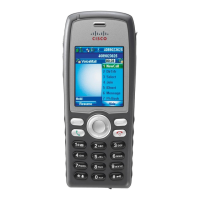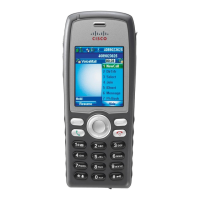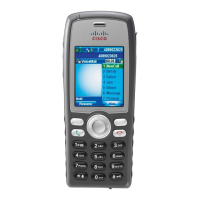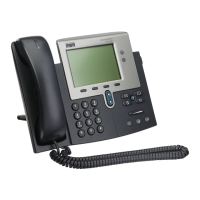10-5
Cisco Unified Wireless IP Phone 7925G Administration Guide for Cisco Unified Communications Manager 7.0(1)
OL-15984-01
Chapter 10 Troubleshooting the Cisco Unified Wireless IP Phone 7925G
Resolving Startup and Connectivity Problems
You can also enable the phone to use a static TFTP server. Such a setting is particularly useful if the
phone was recently moved from one location to another.
For information about determining and changing TFTP server settings, see “Configuring IP Network
Settings” section on page 4-23 or “Viewing the Current Configuration” section on page 8-12.
Verifying IP Addresses
You should verify the IP addressing for the Cisco Unified Wireless IP Phone 7925G. If you are using
DHCP, the DHCP server should provide these values. If you have assigned a static IP address to the
phone, you must enter these values manually.
Note When the wireless IP phone loses the RF signal (goes out of the coverage area), the phone will not
release the DHCP server unless it reaches the time-out state.
Check for these problems:
• DHCP Server—If you have assigned a static IP address to the phone, you do not need to enter a value
for the DHCP Server option. If you are using a DHCP server, and the wireless IP phone gets a
response from the DHCP server, the information is automatically configured. Refer to
Troubleshooting Switch Port Problems, available at this URL:
http://www.cisco.com/warp/customer/473/53.shtml
• IP Address, Subnet Mask, Primary Gateway—If you have assigned a static IP address to the phone,
you must configure settings for these options. See the
“Configuring IP Network Settings” section
on page 4-23.
If you are using DHCP, check the IP addresses distributed by your DHCP server. Be aware of DHCP
conflicts and duplicate IP addresses. Refer to Understanding and Troubleshooting DHCP in Catalyst
Switch or Enterprise Networks, available at this URL:
http://www.cisco.com/warp/customer/473/100.html#41
For information about determining and changing IP addressing, see “Configuring IP Network Settings”
section on page 4-23
Verifying DNS Settings
If you are using DNS to refer to Cisco Unified Communications Manager, you must ensure that you have
specified a DNS server. You should also verify that there is a CNAME entry in the DNS server for the
Cisco
Unified Communications Manager system.
You must also ensure that DNS is configured to do reverse look-ups. The default setting on Windows
2000 is to perform forward-only look-ups.
For information about determining and changing DNS settings, see “Configuring IP Network Settings”
section on page 4-23.
Verifying Cisco Unified Communications Manager Settings
The Cisco Unified Wireless IP Phone 7925G attempts to open a TCP connection to all the
Cisco
Unified Communications Manager servers that are part of the assigned
Cisco
Unified Communications Manager group. Take one of these actions to verify Cisco Unified
Communications Manager settings:
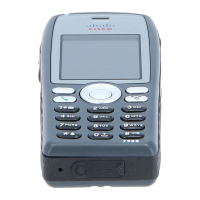
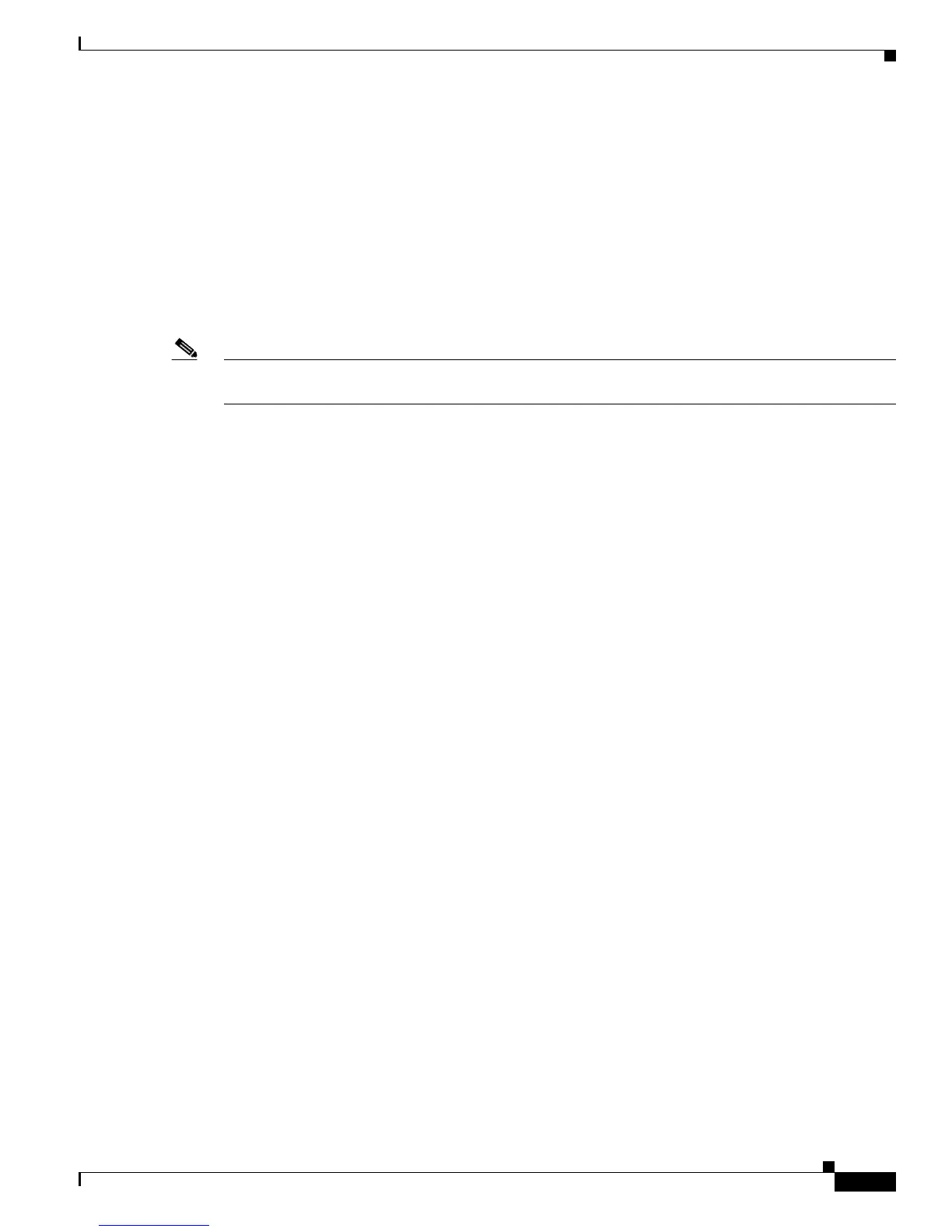